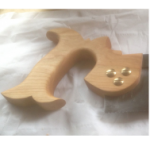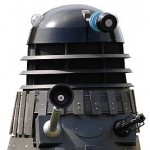Metric Vs Imperial
Welcome! / Forums / General Woodworking Discussions / Tools and Tool Maintenance/Restoration / Metric Vs Imperial
Tagged: centimeter, feet, foot, imperial, inch, measure, meter, metric, millimeter, ruler
- This topic has 14 replies, 10 voices, and was last updated 10 years, 6 months ago by
 NikonD80.
NikonD80.
-
AuthorPosts
-
I don’t know if this has already been posted here or not. Apologies, if it has.
Metric Vs Imperial
 4 September 2013 at 6:59 pm #17677
4 September 2013 at 6:59 pm #17677Not sure either, Kelly…but either way, no need to apologize. 🙂
I have read this before, but honestly don’t know if it was through a link on the forums or perhaps the unplugged shop. But I have to agree with much that was said here. From a purely mathematical standpoint, the Metric system makes more sense. But from a hands-on workshop standpoint I much prefer the Imperial system. I like the smaller and smaller divisions and what they imply when relating different measurements and distances, and for me at least, Imperial is much more intuitive to use, even though I have quite a bit of experience in using the Metric system.
Thanks Kelly, if in doubt just use the search forums buddy. I don’t mind witch one I use to be honest, I never try and convert though if the plans are in metric I use metric, if they are in imperial I use imperial.
I go by eye most of the time when making something from scratch, once the shell is made everything is marked from that,HaHa just the way I do it. 😉
4 September 2013 at 11:14 pm #17682Inch/ounce/Uncial all are related from roman times IIRC
Personally I loathe the metric system, it came in half way through school and has been a source of confusion to me ever since. I also have personal “political” reasons to dislike metrication, as a european collective phenomena. Metric is probably easier for programming CNC machinery?
Its interesting they still have “pouces” (thumbs) as a unit of measurement in parts of France….wether its legal or not I dont know.
Regardless, earlier today I drew a simple enough rod for a 3 leg cricket table. I simply didnt bother with “measuring it out” per se metric or imperial, I used various battens to experiment and set out the proportions and angle splay. Then when I was happy, accurately firmed the lines with straight edges, using a framing square, dividers, bevel gauge etc. And will establish my dimensions for sawing and planing up my stock directly from the rod, in fact with little if any need to “measure” anything….Well, I haven’t ever used the metric system so, I really don’t know what the differences would be — besides the obvious.
But, I’ve seen discussion about the two systems on this site a time-or-two so, I thought folks might be interested in the article.
I’m stick’n with the Imperial because that’s all I know. 🙂
 5 September 2013 at 2:50 am #18048
5 September 2013 at 2:50 am #18048Decimals work better in Metric, Fractions work better in Imperial. Decimals are better in a digital world, but I find fractions are better when dealing with Geometry. So, for me, I guess it depends on wether I am sitting at my desk or standing at my bench. Once you start making things to fit as you go, in the end it really doesn’t make that much difference, it is just a point of reference.
Here is an interesting read about measuring systems:
 5 September 2013 at 2:38 pm #18062
5 September 2013 at 2:38 pm #18062The times I have been in a timber yard and said I’ll have a 2.4 M x 4″ x 2″ lol
5 September 2013 at 8:42 pm #18069As the UK was fully metricated when I started school and I’m a working engineer, I mostly work in metric. I particularly struggle with all the fractions with imperial, purely because I’m used to working with decimals.
That said, if I’m judging a measurement by eye I’m just as likely to use inches.
I think its all down to what you’re comfortable with, and sticking to my Dad’s favourite… Measure twice cut once!
6 September 2013 at 5:54 pm #18150Mark I just found this thread and your comment made me chuckle, I can hear myself saying the same thing when I bought the timber for my bench. No wonder the young lad at the yard looked at me confused.
 7 September 2013 at 2:28 pm #18236
7 September 2013 at 2:28 pm #18236I Have had a few cock ups at work where building a stud wall, rafters, or floor joists.Use to work in pairs and one of us be using 16″ centres while the other using 400 mm centres. Come to the end of the run and say that looks a bit wonky lol not that funny really when you got to try and get 4″ wire nails out.
I can work in both luckily I prefer feet and inches for some reason Have to use metric as all drawings for construction sites Metric.
We still use imperial door sizes in UK 7′ x 3, 6′ 6″ x 2′ 9, 6′ 6″ x 2′ 6, 6′ 6″ x 2′ 3, 6′ 6″ x 2′.
Most of us still say our height in feet and inches use stones pounds ounces for weight and still use Miles for our roads its like we cannot let go of imperial in UK.9 September 2013 at 8:08 am #18308When I bought a house recently, it really stands out on rightmove, those estate agents who specified the sizes of rooms in metric, some of them ONLY in metric. Even after 40 years of “metric” we still visualise in imperial measures. Not to mention a detour to the pig & whistle “for a swift half”..!
Do you think they will ever succeed in metricating cricket pitches and rugby pitches?
“the England pack roll their maul right through the Welsh 20.1168”
When I used to just build replica props for a hobby, I was quite happy working in metric then I built a prop from the 60’s and all the measurements were in Imperial as that’s what the builders would have worked in so I used Imperial too. Now, the more I work with wood, the more I’m converting over to using Imperial measurements. I find as long as I don’t mix things as I go along then the project turns out OK. The only time I don’t like Imperial measurements is when someone is using decimal inches; dividing an inch by 10 just feels wrong to me.

After reading the blog post I have a question for our British friends. Do they not teach decimeter (dm) in British schools?
Using both systems I find that they metric system is much easier for me, just move the decimal and you can convert from µm to km in a blink of an eye.

They do teach metric in our schools but it does tend to be diluted a tad by day-to-day living. We still measure our journeys in miles, we still buy a pint of beer or milk. Weight is still thought of in terms of stones, pounds and ounces, a cars performance will be measured in miles per gallon. The list goes on and on. My children who are 14 and 11 wil even quote their height in feet and inches. The only decimal thing that seems to have really taken root is currency but I can remember having to work out maths problems in guineas as opposed to pounds and pence when I was in school and that would have been in the mid 70’s.
-
AuthorPosts
- You must be logged in to reply to this topic.
